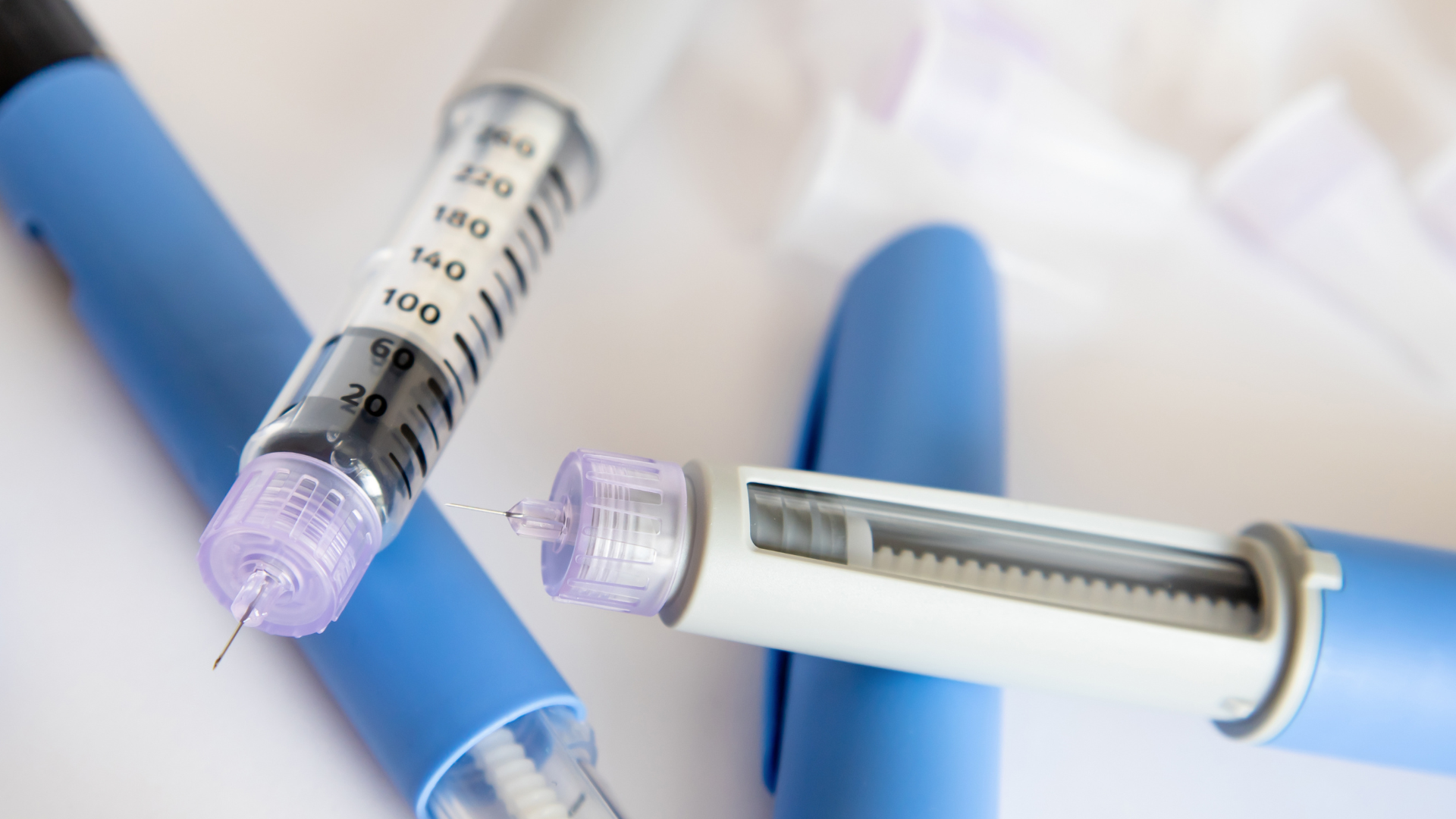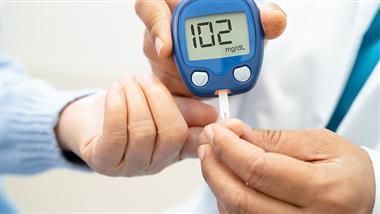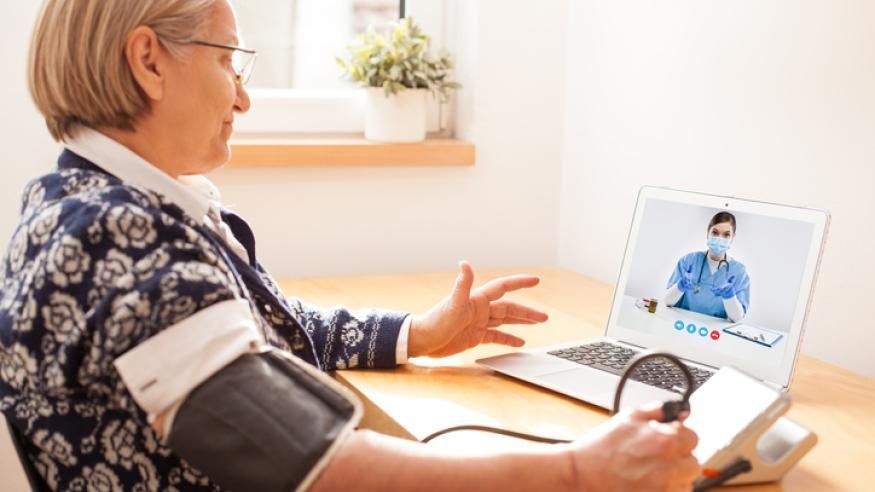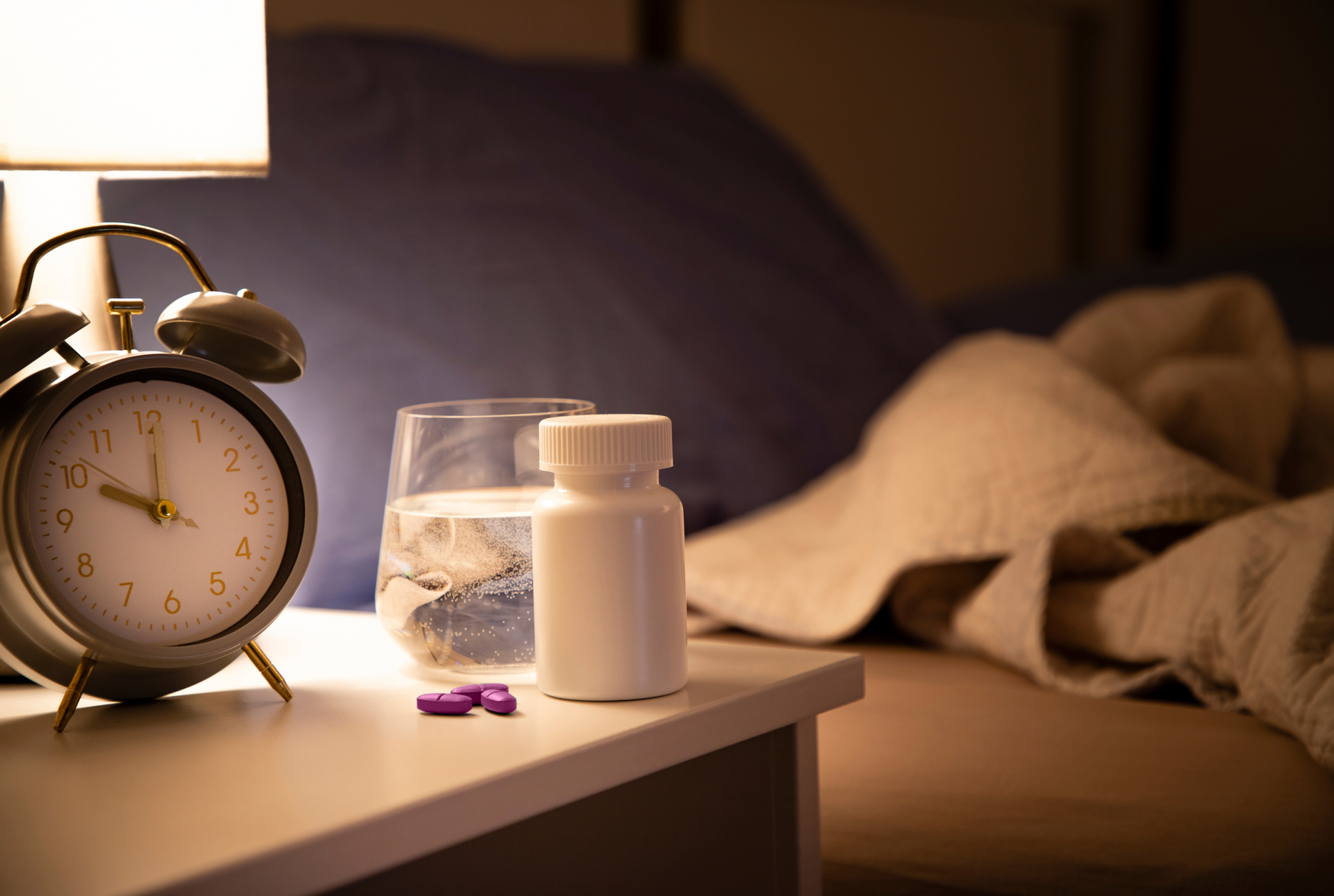Strawberry Swirl Ice Cream
This five-ingredient summer strawberry ice cream recipe features only whole and natural ingredients and contains only 15 grams of total carbs per serving.
This berry ice cream recipe is from the “Diabetes Cookbook for Dummies,” by Dr. Simon Poole, a medical doctor and expert on the Mediterranean diet, and chef, cookbook author, and culinary host Amy Riolo.
Poole and Riolo, who previously co-authored the book “Diabetes Meal Planning and Nutrition For Dummies,” have put together a collection of 135 recipes created with optimal control of diabetes in mind. Both have compelling reasons for including this creamy frozen berry dessert recipe.
Strawberries are ideal for starring in dessert as they’re rich in vitamin C, manganese, and antioxidants such as quercetin and anthocyanins, which contribute to immune health, support skin health, and may have anti-inflammatory effects, Poole pointed out. He added that swapping out heavy cream for yogurt also has benefits, as Greek yogurt is an excellent source of protein and calcium, and its fermentation process may improve the absorption of calcium and B vitamins in yogurt as compared to milk.
Co-author Amy Riolo created her take on strawberry ice cream because the pairing of strawberries and cream simply go hand in hand during summer months.
“This version is better than commercial versions because it’s fresh, free of preservatives and unwanted ingredients, and full of what’s good for you,” she said.
Riolo’s cooking focuses on using whole, natural ingredients and limiting added sugar. To achieve this, she incorporated a small amount of honey into this recipe to bring out the natural fragrance of the strawberries. Her rendition of strawberry ice cream also has the creaminess of traditional churned ice cream without any of the saturated fat.
Recipe Details: Strawberry Swirl Ice Cream
Adapted from “Diabetes Cookbook for Dummies” by Dr. Simon Poole and Amy Riolo
Active time: 15 minutes
Total time: 15 minutes plus overnight chilling time
Makes: 8 servings
Total carbohydrates: 15 grams per serving
Recipe Notes
This versatile ice cream recipe offers plenty of room for flexibility, according to Riolo. Strawberries can be swapped for an equal amount of blueberries. You can also freeze the recipe in popsicle molds or in silicone heart-shaped muffin pans for a cute presentation.
If you don't have an ice cream maker, Riolo suggests following these steps instead: Heat milk, yogurt, and water in a medium saucepan over medium heat until just boiling. Chill a .25-liter (5-cup) capacity metal loaf pan in the freezer. Stir the strawberries, honey, vanilla, and salt into the milk and yogurt mixture. Pour into the chilled container and freeze the ice-cream for 6 hours, overnight, or until completely frozen. If it isn't smooth, you can beat it with electric beaters to break up crystals and refreeze until frozen again.
Ingredients
- 2 cups (304g) fresh strawberries, cleaned, hulled and divided in half
- 1/4 cup (85g) pure honey, divided
- 1 cup (226g) Greek yogurt, drained to remove any water on top
- 1-1/4 cups (300ml) whole milk
- 2 teaspoons (10ml) vanilla extract
- Pinch of salt
Instructions
- Purée 1 cup strawberries and 2 tablespoons water in a blender or food processor until smooth. Add 2 tablespoons of the honey. Cover and place in the refrigerator.
- Finely chop the remaining cup of strawberries.
- In a medium bowl, whisk the yogurt, milk, vanilla, remaining 2 tablespoons of honey, and salt. Stir in the chopped strawberries and refrigerate 1 to 2 hours or overnight.
- Turn on the ice cream maker, pour the mixture into the frozen freezer bowl, and let maker run until a soft, creamy consistency is achieved, about 20 minutes.
- Slowly pour in the strawberry purée from the refrigerator. Turn off as soon as the purée is swirled in but not blended – this takes only a few seconds.
- Transfer the ice cream to an airtight container and freeze for at least 3 hours, or until it achieves the desired consistency. Serve in dessert bowls.
Nutritional information per serving: 95 calories, 3 g total fat, 2 g saturated fat, 0 g trans fat, 5 mg cholesterol, 49 mg sodium, 15 g total carbohydrates, 1 g dietary fiber, 11 g sugars, 4 g protein.
Excerpted from the book Diabetes Cookbook for Dummies 5th Editionby Dr. Simon Poole and Amy Riolo. Copyright © 2024 by John Wiley & Sons, Inc. . Reprinted with permission. All rights reserved.
Healthy Bites















